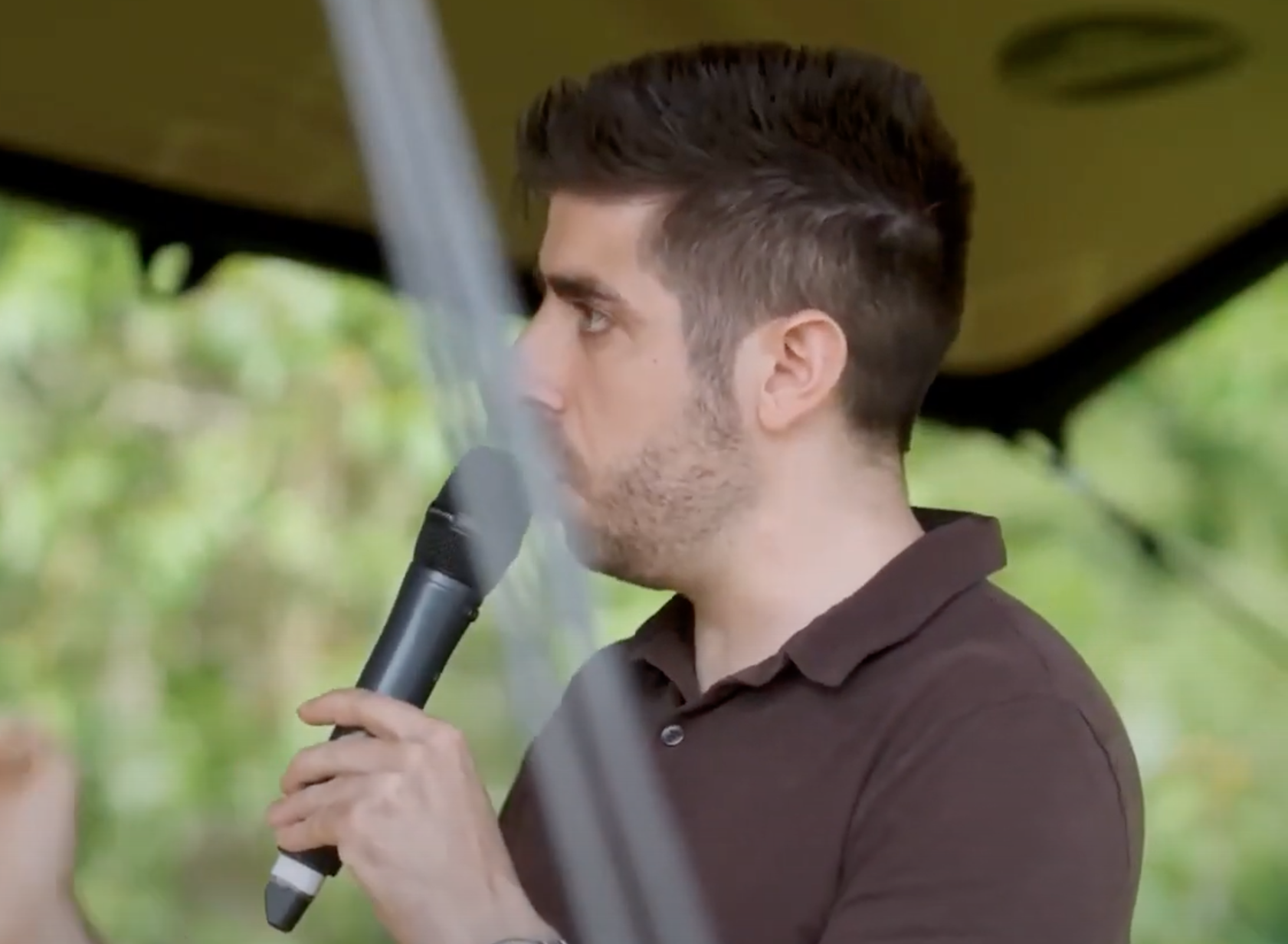The threat of far-right terrorism is once again at the top of the news in Belgium, as a terrorist plot was uncovered by police this week.
Last week, the Federal Public Prosecutor’s Office revealed that the police had carried out a dozen dawn searches in Flanders as part of an investigation into preparations for an attack by a far-right extremist group.
Six individuals were arrested in Merksem, a district of Antwerp, after which a shootout ensued in which 36-year-old Yannick Verdyck died.
Who was Yannick Verdyck?
While the Federal Public Prosecutor’s Office provided little information on Verdyck, his social media account present him as a metal dealer, collector of weapons and sports shooter.
Politically, he never hesitated to express his far-right sympathies, hatred of immigrants, the Jewish population and of the Belgian state. He had also pleaded for the establishment of a military dictatorship in Belgium.

Unidentified screenshot of Yannick Verdyck.
His last message was posted on 26 September and celebrated the victory of far-right party Fratelli d’Italia in last weekend's Italian elections.
Far-reaching far-right
This is only the latest in a long line of incidents far-right that all bear a number of similarities, the most striking of which being the refusal of far-right parties such as Vlaams Belang to condemn these actions.
In fact, in some cases such as the disappearance and death of Jürgen Conings, the opposite has been true.
In 2021, the former soldier fled with service weapons into the woods and threatened the government and virologist Marc Van Ranst, before being found dead after committing suicide.
His case caused a lot of condemnation but also a lot of sympathy from citizens convinced that the state was establishing a sanitary dictatorship, with the creation of several 'fan pages.'
Verdyck is said to have been been a member of one these groups, according to Het Laaste Nieuws. Furthermore, several representatives of Vlaams Belang had also openly supported Jürgen Conings.
However, Coning's death did not put an end to the party's rising popularity in the polls, with the party estimated at 25%.
Indoctrinating the youth
And then, there is Schild & Vrienden, the far-right-wing Flemish nationalist youth movement founded in 2017.
Nine members of the openly racist group were charged by the Public Prosecutor's Office in 2021 for incitement of hatred, and the coverage of the group caused widespread concern throughout Belgium – but also sparked a wave of support.
Vlaams Belang saw an opportunity and despite him being prosecuted, the party recruited Dries Van Langenhove, the group’s president.
Related News
- Good Move? Far-right Vlaams Belang targets Brussels with divisive ads
- Police shootout in Antwerp with far-right group leaves one dead
- The meaning of Jürgen Conings
Langenhove intends to stand as a candidate for the party despite the looming threat of the conviction. This also offer Vlaams Belang a win-win situation: if he is not sentenced in court, it will be a triumph, if he is convicted, he will become a martyr.
History of violence
The third example is that of Hans Van Themsche, who killed two people and injured a third in Antwerp over 16 years ago, after s admitting to having wanted to kill as many foreigners as possible.
This tragedy is particularly damning for the party as Van Themsche's father was one of the founders of Vlaams Belang.
Bart Somers, then president of the Open Flemish Liberals and Democrats (VLD) and current mayor of Mechelen, believes that Vlaams Belang has an overwhelming responsibility for the events.
But despite Somers' concerns, a few months after the massacre Vlaams Belang won 94,000 votes in the Antwerp local elections, the party's biggest result in the region. A few months after that, the party won 800,000 votes in the 2007 federal election.
Violent vow of silence
Violence linked to the far right does not seem to harm the far-right in the political sphere, which is difficult to grasp.
While violence linked to a party repels certain voters, Flanders' history and the electoral results of Vlaams Belang proves that nearly a quarter of voters are unaffected by the apparent links.
There are two hypotheses: either the voters dissociate these violent acts from the Vlaams Belang, or they consider the violence to be legitimate or, at the very least unproblematic.
The most likely scenario is that both voter profiles coexist within the party. Vlaams Belang has understood this well and, thus, cultivates a certain ambiguity in relation to far-right violence so as not to alienate either electorate, with their latest non-response serving as the latest examples.

